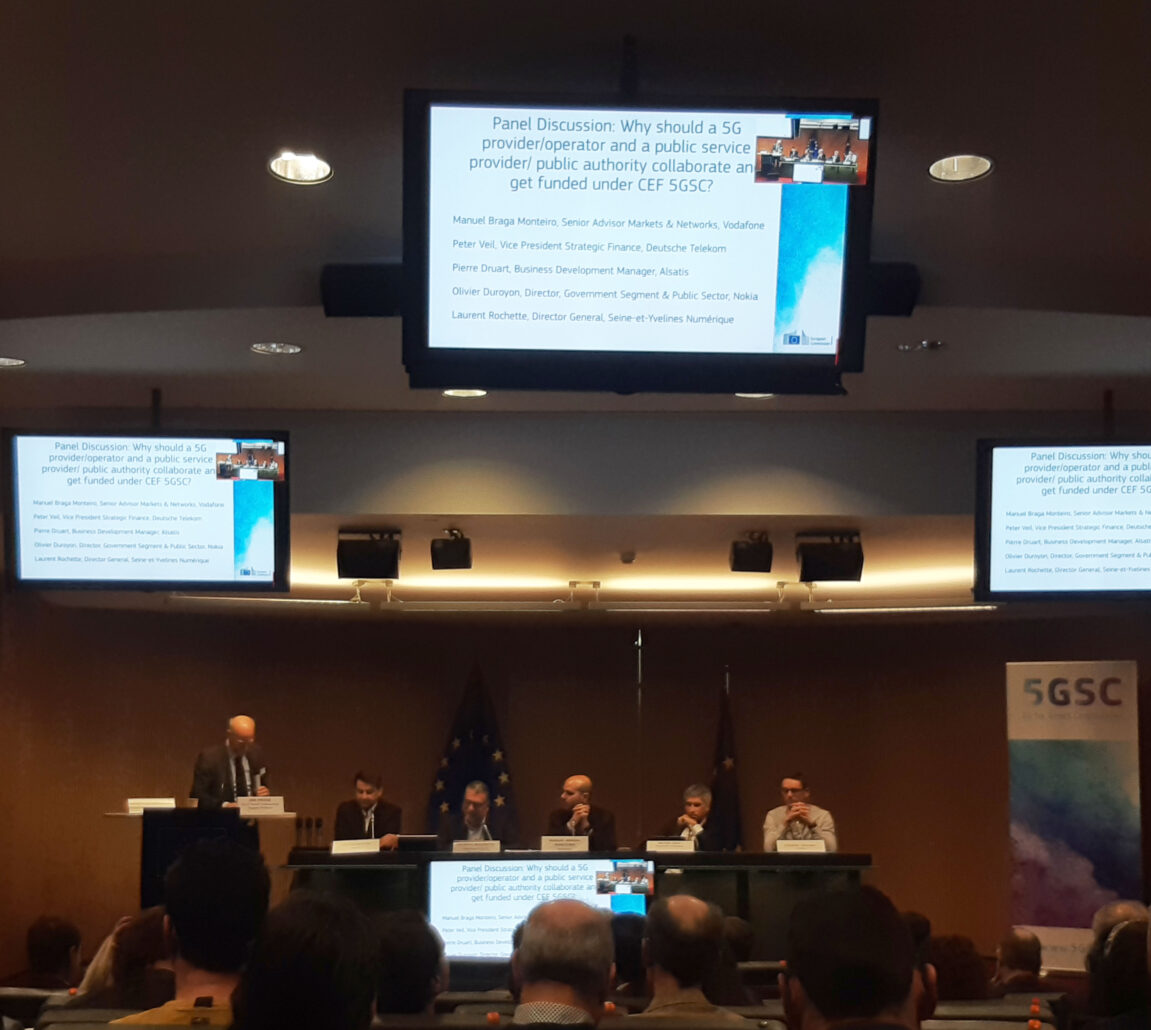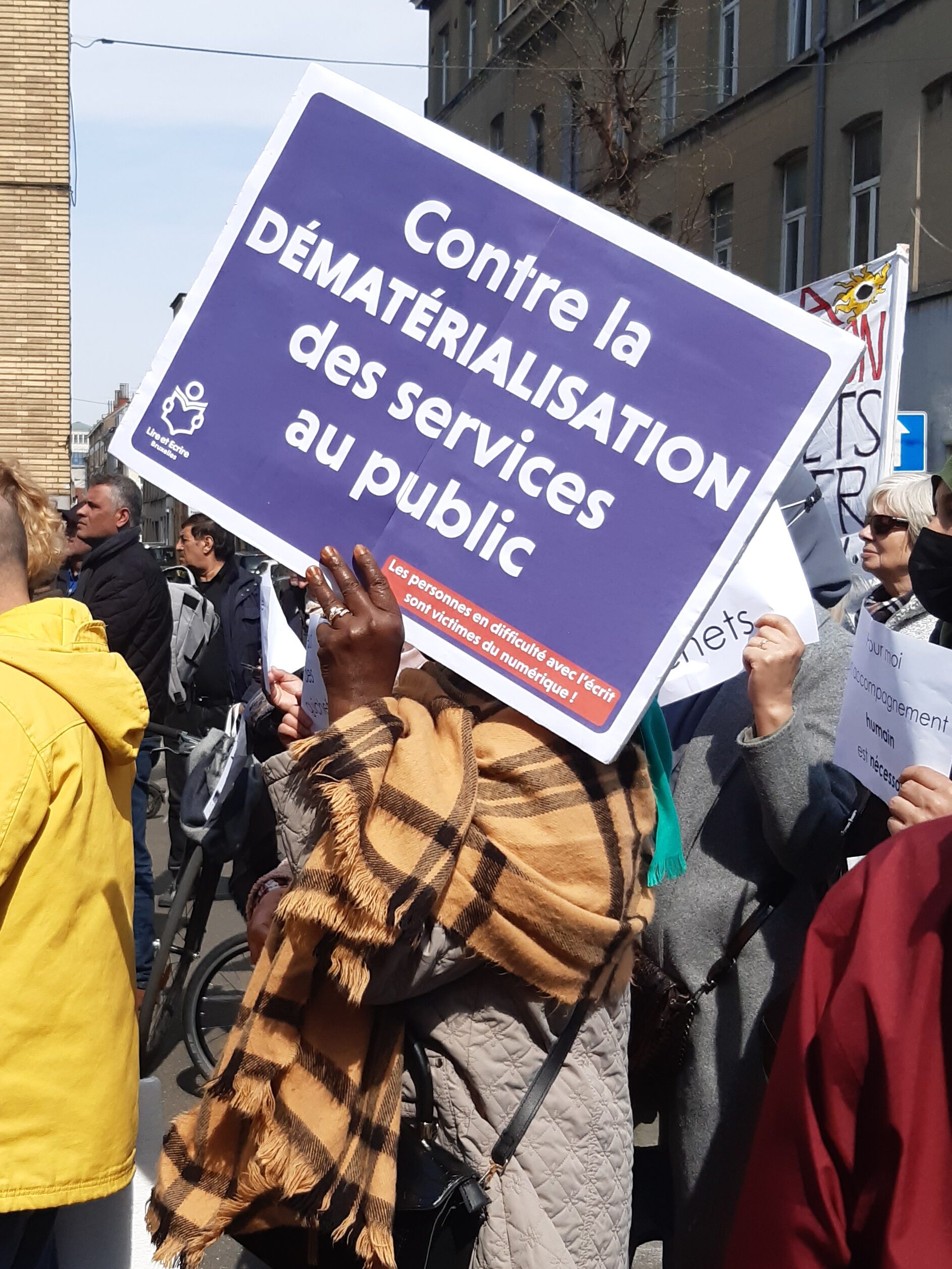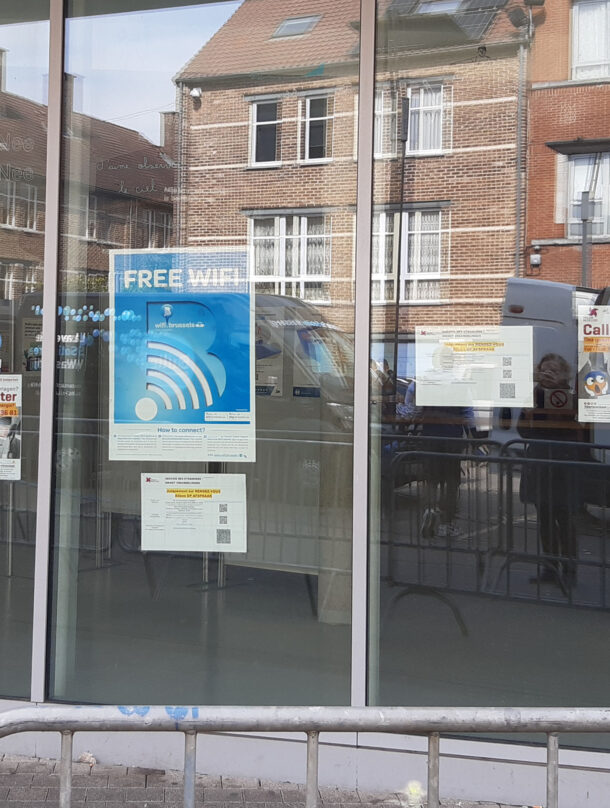by Nona Schulte-Römer
In the WAVEMATTERS project, we are interested in how physical waves come to matter in contemporary cities and urbanism. To find answers, I’m currently in Brussels for field research. Here, I can observe how policy makers like the European Commission pave the way for the deployment of the new telecommunication standard 5G via funding schemes and networking events like the launch event ‘5G for Smart Communities’ (5GSC).

At the same time, I am also meeting and speaking with the spokespeople of local activist groups who are fighting to stop 5G in Brussels, Belgium and elsewhere promoting the idea of a ‘Territoire sans 5G‘ – a territory without 5G. People I have spoken to so far, expressed their discomfort and even indignation that industry and policy makers had made up their minds, taken decisions and signed contracts long before they invited citizens to give their opinion and co-design their future urban spaces and public services.
Lived realities of electromagnetic fields clash with technology and risk assessment
I also interview people who fear that new and more electromagnetic waves will have serious biological effects and that these health and environmental issues are not properly accounted for in existing standards and risk assessments. Some have developed, at a certain point in their lives, symptoms like insomnia, memory or concentration loss, head aches or nausea and soon identified electromagnetic waves as the source of their physical pain and suffering. This intolerance is also known as electrohypersensitivity (EHS) or as ‘idiopathic environmental intolerance’ to electromagnetic fields (IEI-EMF).
One of my first interview partners, a smart and politically active civil engineer, realised in his mid-twenties that he had trouble to concentrate and sleep in the presence of electromagnetic waves. After living in denial for a while, he gave up his urban lifestyle and moved to the countryside to get better. He also co-founded an organisation with the very appropriate name ‘My Life in Flight Mode’ – ‘Ma Vie en Mode Avion‘ to inform the public about EHS.
The lived reality of EHS persons clashes with the results of official risk and technology assessments of 5G wireless technology in the EU. These assessments acknowledge that there are scientific studies that show that cells or living organisms are negatively affected by exposure to high-frequency electromagnetic radiation. Yet in summary, governance-related reviews of research findings on thermal and biological effects conclude that there are no scientific grounds for stopping or postponing the deployment of 5G for precautionary reasons.
Accordingly, the government of the Brussels-Capital Region has paved the way for the 5G rollout and proclaimed a ‘digital spring’ in March 2023. This initiative aims to invite ICT partners and promote all activities that “simplify the life of citizens” and “develop an inclusive, ethical and sustainable digital environment” – to name but two objectives.
Will ‘Smart Brussels’ accommodate its inhabitants?
However, this idea of inclusiveness is highly contested as I could see when I attended a demonstration against the local ‘Smart Brussels’ plans (Bruxelles Numérique) on April 27, 2023 in Molenbeek-Saint-Jean, one of the 19 municipalities of the Brussels-Capital Region. During the demonstration, 5G was not mentioned even once. Nevertheless, the protest against the digitisation of public services is also an indirect rejection of urban innovation strategies that focus on low-latency wireless communication, digitalised public services and an Internet of Things (IoT). Instead, the protesters’ claim or chant “We want respect! We want counters!” calls for maintaining or providing the material basis for social cohesion, inclusion and face-to-face encounters, in short, for ‘good’ urban coexistence.

In Molenbeek, a diverse crowd of protesters (Image 2) had gathered on a central square. Little kids, youths, man and women of all ages held signs that gave a clear picture of the challenge ahead: “At the unemployment office, it’s email. At the public welfare office, it’s email. That’s a lot. You do everything by yourself. For someone who didn’t go to school, it’s difficult.” Or: “As I only have a smartphone, I don’t know how to do things online. I would need a computer which I don’t have.”
How ‘dematerialisation’ amplifies communication problems
Nobody mentioned 5G or spoke about electromagnetic waves. Yet, low-latency wireless technology and increasing data exchange will facilitate what the protesters fear and shout against: The dematerilisation of the city, meaning the elimination of counters (guichets in French). Digital interfaces will replace physical encounters that nowadays still allow citizens to meet their representatives and administration in person.
In little live performances, some protesters demonstrated how interactive problem-solving fails when the physical administration counter is replaced by automated answering machines or by the famous ‘voice from the tape’, that we all know from calling public or private service providers.
Keeping the guichets, the counters, thus stands for maintaining social spaces where language problems can be solved and mutual understanding can be achieved in live interactions. The digitalisation, as it is currently envisioned, thus spurs the ongoing crisis of democracy, explains Céline Nieuwenhuys, the secretary general of the Belgian Federation of Social Services (Fédération des Services Sociaux – FdSS), on stage.
Linking Molenbeek and the Brussels European Quarter
So, is it too much of a stretch to argue that 5G and its physical waves also come to matter in this protest against a dystopic scenario of ‘Smart Brussels’? I see at least three ways in which the 5G rollout and the protest on the street are linked. First, it is fair to say that the promise of faster and more efficient data transfer spurs the dream of digitalisation. Social scientists speak of performative promises and expectations. The European Commission calls it ‘5G for Smart Communities’.


Second, the global competition in the telecommunication market leads to a situation where the rollout and standardization of 5G has to happen fast. In this race for market leadership, cities function as test beds and demonstrators. This global pressure is at odds with time-consuming democratic deliberation and local co-designof ‘smart’ services.
Third, innovators like the consortia partners during the EU launch event know that the 5G rollout is all but a purely techno-economic exercise. Instead, they hope that citizens will engage with digital innovations and learn how to use ‘smart’ city services. The people on the street seem less convinced of it, as the speeches, performances and posters show. “To the politically responsible: Do you know that do not know how to do everything online?” (image 3). The challenge is here, to find smart solutions for those that will not keep up with the technological change and will not be able to interact with digital interfaces – be it because they don’t have the means and skills or due to impairments associated with an intolerance to electromagnetic waves.
‘Dematerialisation’ or ‘depopulisation’ of administrative acts?
To conclude, the notion of dematerialisation brings me back to our WAVEMATTERS research question regarding the physical waves in contemporary cities and urbanism. The protesters in Brussels fear that ‘smart communities’ will entail a demateralisation of public services (image 4) making them nearly inaccessible for people who cannot read, have language problems or difficulties in navigating digital worlds. But is it really a dematerialisation that is going on? After all, smart communities require very tangible infrastructures including antennas, smartphones and computers, electronic chips and electricity grids.
I would rather call it a depopulisation of administrative acts. While the materiality of public administration is shifting towards more digital devices and more physical waves, we will most probably see less bodily encounters between people in public offices and ‘citizens’ might behave more like ‘clients’ and ‘users’ in the future. Eventually, artificial intelligence might turn the ‘voice from the tape’ into a better listeners and digital interfaces might be real translation aids. I doubt that there will be smart interfaces for soothing desperation and anger or for exchanging smiles and laughter.
All images © Nona Schulte-Römer

